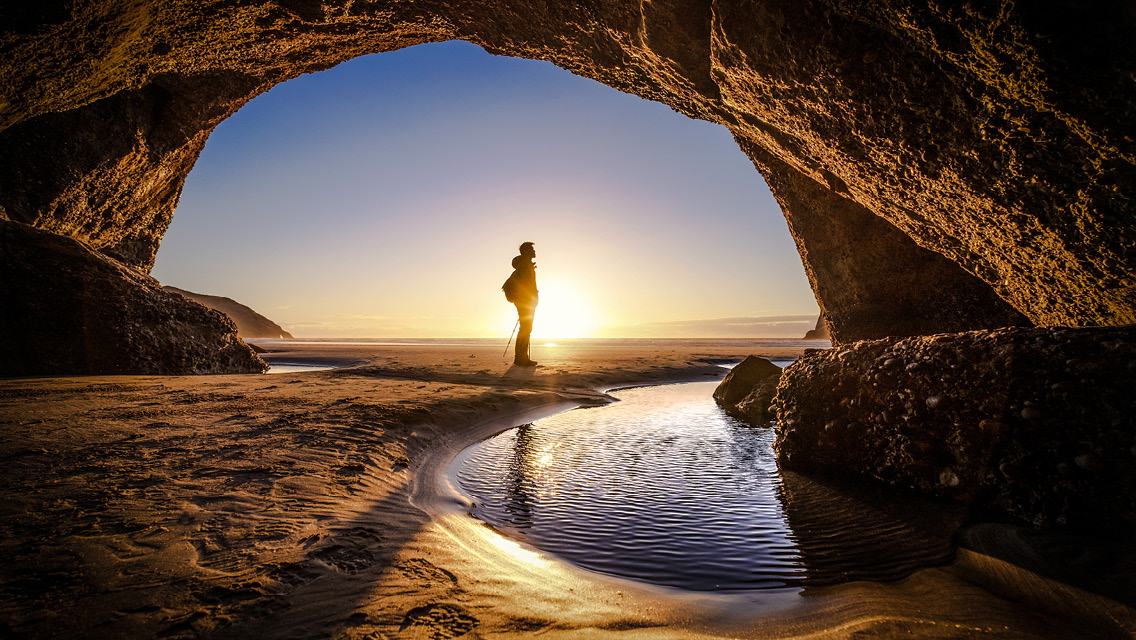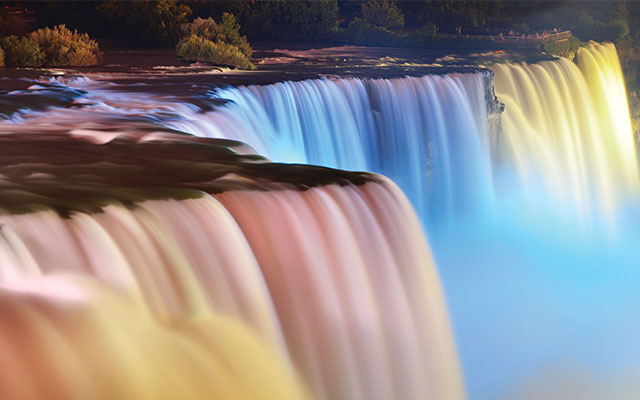How far away is wilderness? How far must you travel to completely escape the sounds of the modern world, of airplanes and automobiles? How distant – how mythical – is a place so remote your cell phone won’t ring and your BlackBerry will go black?
The answer may be right under your feet.
The United States boasts more than 50,000 caves (you probably live within a few hours’ drive of one), including the world’s longest – Mammoth Cave in Kentucky – as well as some of the planet’s most spectacular, such as Lechuguilla Cave in New Mexico, which bristles with rare and delicate mineral formations.
Many caves trace the twisting trails of subterranean rivers, with thundering waterfalls tumbling into sunless seas. Others are dry and dusty, with labyrinthine passageways connecting silent amphitheaters. Some were carved by molten lava, leaving behind a maze of subway-sized tubes.
Most feature delicate rock formations called speleothems. In addition to stalactites and stalagmites, these include flowstone stairways, convoluted draperies and perfectly round “cave pearls.” And many are home to unique plant and animal life – some of which have only recently been discovered.
“People are attracted by the excitement of going someplace that not many others have visited,” says William Tozer, president of the 12,000-plus-member National Speleological Society (NSS). “Youth groups enjoy the physical activity of traveling through the cave, while many older cavers enjoy studying the formations and elaborate passageways.”
Get Muddy
Guided tours are an easy way to get your feet wet underground – in some cases, literally. A professional cave guide will supply you with the proper equipment, instruct you on how to cave safely and show you how to protect the fragile underground environment.
Most tours follow established trails in public caves. Be sure to ask about the cave’s level of remoteness before booking a tour. A “show cave” festooned with colored lights and piped-in sound could disappoint those seeking a pristine environment. Likewise, a rugged daylong tour that ends with a steep hike back to the surface could prove difficult for seniors or young children.
Ask questions about the guide, as well. In addition to having experience underground, the guide leading a wild-cave tour should be certified in wilderness first aid and trained in cave rescue techniques. The best guides often volunteer on local cave-rescue squads and are active members of recognized caving organizations, such as the NSS.
Caving clubs offer another way to get started. Often called “grottos,” clubs meet to socialize, learn and plan local outings. Most grottos welcome visitors and invite newcomers to tag along on appropriate trips. Be sure to ask the same pre-excursion questions of an amateur-trip leader that you would of a professional guide.
In addition to being a less expensive and more social way to begin caving, clubs offer something that commercial cave guides never will: Once they trust you, they’ll show you where the really good caves are.
Like fishermen, cavers tend to be quite secretive about the locations of their favorite holes. Safety is the main reason; no one wants to be responsible for a lost or injured novice. Conservation of the cave is another concern; cave life is extremely fragile, and speleothems that took a thousand years to form can be easily destroyed with the careless bump of a helmet. Landowner relations are also an issue; permission must be obtained before entering caves located on private property.
For these and other reasons, cave maps are rarely sold to the public – but they’re often shared freely among cavers. And, yes, North American hobbyists prefer to be called “cavers.” In the 1960s, the term “spelunker” came to refer to inexperienced cave explorers. The sentiment persists today. A popular bumper sticker boasts: “Cavers rescue spelunkers.”
Go Deeper
Once you’ve learned how to travel underground without endangering yourself or the cave, you might be surprised to discover how many different ways you can stay active below the earth’s surface.
Because there are thousands of unmapped caves in the United States (and around the world), serious cavers learn to survey underground terrain. Surveying is the process of exploring and charting new cave passageways and then using the information that has been gathered to make maps of the cave. Knowing how to survey underground is an essential skill for explorers, who must submit a verifiable survey to claim any new discovery, and for cave biologists, who study animal life in caves.
Subterranean biology is itself a burgeoning area of interest for cavers. Animals that spend their entire lives underground are called troglobites. Blind and without skin pigment, these organisms are uniquely adapted to their harsh, sunless environment. During the past three years alone, at least 27 new species of spiders, centipedes and scorpion-like invertebrates have been identified. These particular species were discovered not in some far-off jungle, but within two easily accessible national parks in central California: Sequoia and Kings Canyon.
Cave photography is another specialty that attracts many cavers. By firing a single light source over and over again during a long exposure, many photographers literally paint the composition of the photograph with light.
Many former rock climbers take up “vertical caving,” which involves the use of rope and specialized gear to descend routes too steep to explore on foot. Likewise, some scuba divers take up cave diving, or underwater cave exploration, a highly dangerous specialty involving extensive training.
Each year, a handful of veteran cavers can join one of several expeditions seeking to discover the world’s deepest cave. While every mountain climber knows which peak is the world’s tallest, no one will know which cave is the deepest until explorers bottom them all. The current record holder is the 2,080-meter-deep Krubera – or “Crow’s Cave” – in the Caucasus Mountains of the Republic of Georgia.
Savor the Deep
While expeditions to Crow’s Cave are both expensive and arduous, North America still boasts thousands of not-yet-fully-explored cave systems. For many people, this unseen wilderness – and the chance “to boldly go where no one has gone before” – is an irresistible lure.
In a world where it often feels like there is no place left to “boldly go,” where the great mountains have been summited and the farthest corners of the earth’s surface have been explored, we have to look deeper to explore new terrain.
Many amateur cavers have savored that golden moment in their caving career when they become the first person to set their boots upon never-before-seen ground. It’s an experience that one simply cannot have anywhere else on Earth.
Subterranean Speak
Before you head underground, build a vocabulary that will help you talk the talk with those who enjoy caving.
- Caver – The term used to describe someone who explores caves. Most active cavers dislike the lay term “spelunker.”
- Scoop – To discover an unexplored cave passage.
- Speleothem – A mineral deposit found in caves, usually formed after water saturated with calcium carbonate leaves behind calcite.
- Stalactite – A type of speleothem formation that forms on the roof of a tunnel or chamber when water drips from the cave ceiling. Small stalactites may look like icicles or soda straws, whereas large ones may be meters across.
- Stalagmite – A type of speleothem formation that forms when water drips onto the cave floor and leaves behind a mound of calcite.
- Survey – To gather data used to create a map. In dry caves, such data is obtained with a compass, clinometer and tape measure. The survey data is later drafted into a final map.
- Vertical gear– The equipment a caver uses to climb up and down ropes. Typically this equipment includes ascenders, a rappel rack, a harness, slings and carabiners.
7 Rules of the Cave
- Plan your trip. Arrange to travel with either an experienced guide or a veteran caver equipped with a reliable cave map. Tell someone who’s staying on the surface where you’re going, what time you plan to return and how to contact the nearest cave rescue team.
- Never cave alone. Because even the simplest underground accident could delay a return to the surface, caving is a team sport. Move only as fast as your team’s slowest member.
- Stay in shape. Fatigue makes one prone to accidents. When you’re in poor condition, you slow the team and endanger yourself. Start with short trips before attempting more challenging expeditions.
- Gear up. Carry three independent light sources per person, in case one or more fails. Wear a helmet with a chin strap. If the cave is damp, bring clothes that will keep you warm after you’re wet. If the route requires much crawling, wear gloves and kneepads.
- Don’t touch the pearls. Keep your boots on the trail and your gloves off the speleothems. A single careless touch can destroy or despoil stalactites, stalagmites, draperies or cave pearls formed over thousands of years. Likewise, don’t touch any bats, scorpions or other cave critters.
- Pack it all out. Leave nothing behind. Even small amounts of biodegradable material can upset the ecosystem and claim the lives of fragile troglobites. Trash also ruins the natural splendor of these beautiful places. So pack everything out, especially your own waste.
- Learn the ropes. Cavers employ different rope techniques than climbers. Seek specific training before attempting a cave trip involving any vertical work.



This Post Has 0 Comments